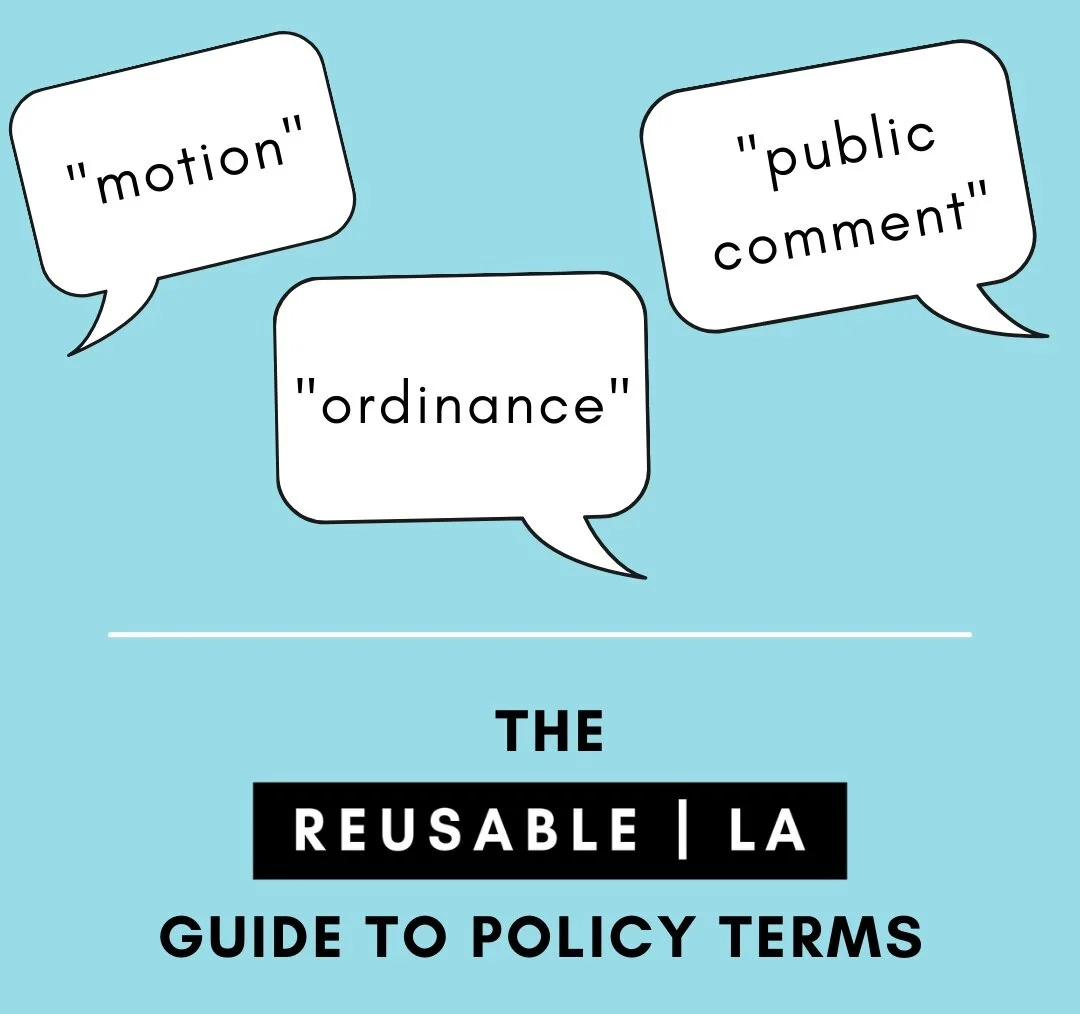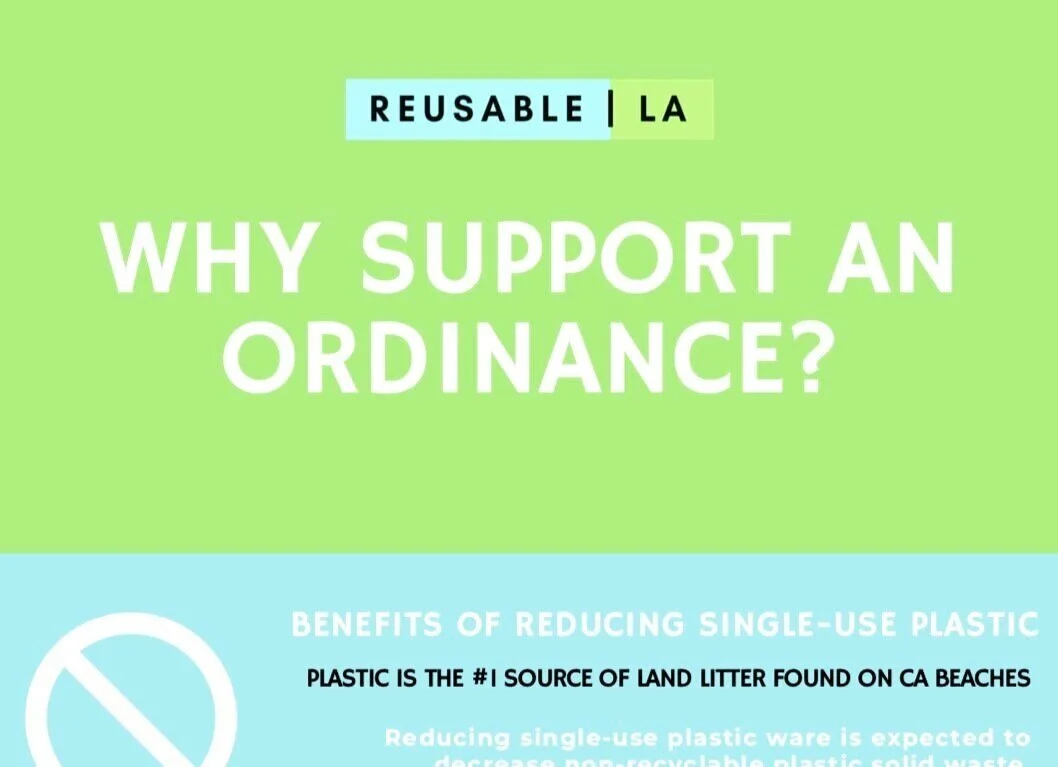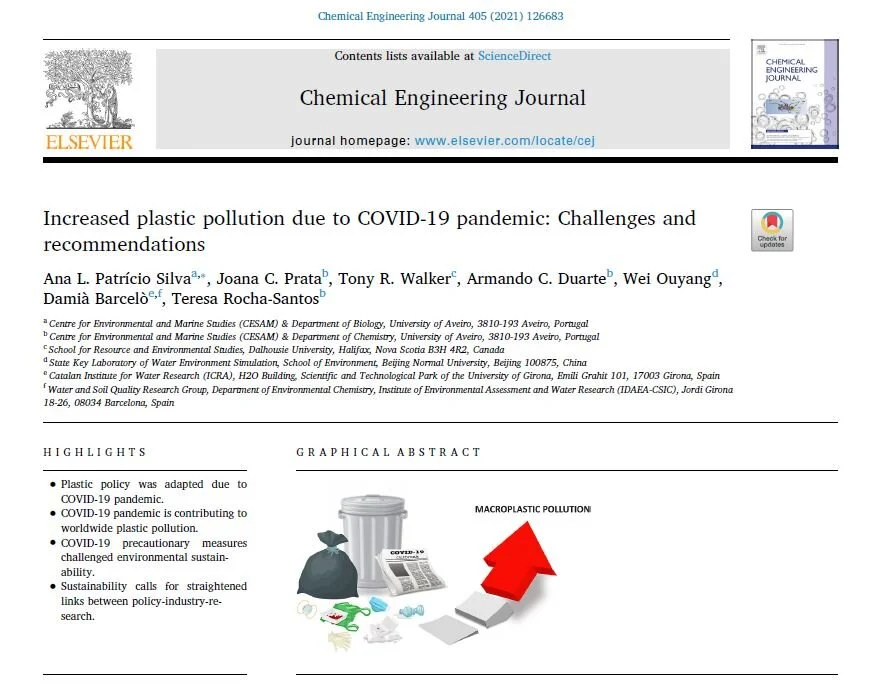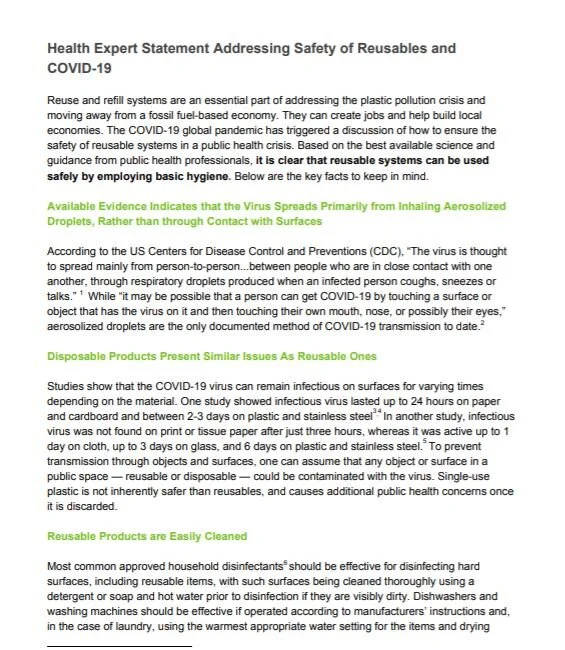Here are some super handy resources for reusables.
+ What is Reusable LA?
Reusable LA is a coalition of organizations working on resolving LA’s plastic pollution issue by championing a reusable culture and empowering other cities to do the same. We complete this mission through legislative advocacy, outreach, and community engagement. Reusable LA works within the greater Los Angeles Region.
Have more questions? Email us at reusablela@gmail.com
+ Who is Reusable LA?
Reusable LA is women and LGBTQIA+ led. Our coalition is made up of almost 30 different local and state organizations. Scroll through the list of organizations on our About page or our website footer.
+ How can I contact Reusable LA?
Have a press inquiry, a restaurant interested in supporting, or more questions? Email us at reusablela@gmail.com
+ What’s the problem with plastic?
At this point, all plastic that has ever been made still exists on our planet. Plastic is made from petroleum and was designed to be very durable, but more often than not, plastic products are used only once. We are only just beginning to understand the effects of our reliance on this material. What makes plastic useful is exactly what makes it harmful: it persists. It is made from molecular chains that are too resilient to biodegrade in a meaningful timeframe. No matter where scientists go looking for plastic, they find it—at the deepest depths of the ocean, isolated islands, frozen at the poles, in our food, and even in our own bodies.
+ Where is all the plastic coming from?
Plastic use and production have accelerated at breakneck speed in the past couple decades, with more than half of all plastics having been manufactured after 2005. The market is controlled by a few major multinational corporations that are collectively investing over 200 billion US dollars in additional capacity to produce even more petrochemicals, the majority of which will become plastic. Advocacy groups are fighting plastic production from the point of extraction, but changing norms and decreasing the demand for plastic is key to stop the overproduction of plastic.
+ How does plastic pollution impact oceans and watersheds?
By 2050, it’s estimated that there will be more plastic in the sea by mass than fish. Plastic pollution finds its way to the ocean from littering, urban runoff, and wind currents. All this trash isn’t just unpleasant, it’s dangerous. Marine mammals, fish, and birds often ingest plastic items, after mistaking them for food. This indigestible trash accumulates in their gut, and as a result, the animals can’t digest real food properly and often starve. Animals can also become entangled in plastic waste, causing exhaustion and often death. Plastic acts as a sponge, absorbing toxins and pollutants already in our waterways and oceans, concentrating them and channeling them into the food chain, and eventually back to us.
+ How does plastic pollution impact our communities?
Plastic pollution impacts communities on a far deeper level than just litter. Plastic pollutes our communities at every stage: from material extraction to product production to transportation to waste disposal. Plastic is a petroleum product, and as big oil companies are producing less fuel for energy due to the uptick of renewables, they are turning to plastic production to make up for the loss. Communities located near petroleum extraction, refining and production sites see higher rates of health issues such as respiratory distress, asthma, and even cancer. These impacts disproportionately affect overburdened communities and communities of color due to proximity to these sites.
+ Why are we worried about plastic foodware?
Between 1950 and 2017 a total of 9.2 billion tons of plastic were produced. That is more than one ton for each person now living on Earth. The biggest share consists of single-use products and packaging, much of which is used to package and serve food and beverages. Less than 10% of all plastic ever produced has been recycled. Finding reusable solutions to single-use plastic foodware would significantly reduce the amount of plastic waste we are producing each year.
+ What’s considered plastic foodware?
Plastic foodware is any disposable product that is used to package or serve food or beverages that is made of any type of plastic. This includes items such as plates, cups, lids, to-go containers, plastic wrap, utensils, and straws. These products can be made of any type of plastic, including both rigid and expanded plastic, like foam.
+ What’s considered reusable?
Reusable options are durable alternatives that are meant to be washed, sanitized and used again without diminishing quality. Simply labelling something as “reusable” does not necessarily make it a reusable item. Products that are designed to be disposable but are used more than once are also not considered reusable.
+ Can’t I just recycle my plastic foodware?
Packaging, which makes up 40% of all plastic waste, poses a particular set of difficulties for recycling. Most is designed to be thrown away after a single use, and is often extremely difficult to recycle due to multi-layered materials. On a global scale, 14% of plastic packaging is currently recycled—though this usually means “downcycling” to make an inferior-quality product. Another 40% is disposed of in landfills and 14% is burned in incinerators. The remaining 32% finds its way into the environment, including dump sites, rivers and the sea, or into the air we breathe.
+ What are some good alternatives to single-use plastic foodware?
When finding good alternatives for foodware, we should aim for reusability, such as reusable glass and stainless steel products. When reusable is not an option, relying on biodegradable fiber-based products like paper, cardboard, wood and bamboo can be a good temporary solution. Since fiber-based products are biodegradable and/or compostable and don’t come from fossil fuels, they are preferred over plastic. However, single-use fiber-based products still have a huge deforestation impact which also contributes to climate change. Therefore, relying on single-use materials, no matter the material, is not a long term sustainable solution, and why reusables are the future.
+ What about bioplastics and compostable plastics?
Bioplastics may have benefits in the durable product world; however, they pose another set of issues for single-use products. They do not degrade in aquatic environments or landfills and require industrial composting facilities to fully break down, which we don’t currently have as part of the waste management infrastructure in the greater L.A. area. In essence, they are no better than petroleum-based plastics if they are disposed of incorrectly, and are not a viable alternative in L.A.
+ What can restaurants and businesses do to help?
Many restaurants and businesses are already doing the right thing, such as ditching plastic straws, providing reusable utensils, plates, and cups, accepting reusables that customers bring, and offering reusable or plastic-free take-out containers. But there is more that can be done. Acting as an advocate and supporting legislation that reduces plastic production and waste is the most valuable and effective thing a business or restaurant can do to help reduce plastic pollution. If you would like to support or partner with Reusable LA, sign up here or send us an email at reusablela@gmail.com.
+ How can individuals support a reusable culture in LA?
Building a reusable culture in LA takes all of us! From using your own reusables and inspiring change in those around you, to joining advocacy efforts to put regulations in place that promote a reusable culture, to supporting and volunteering with local groups offering solutions to the plastic pollution issue, there are many ways to get involved! Learn more about how you can help and join Reusable LA’s email list and our Facebook group to stay updated.
Facts data was obtained from the Plastic Atlas 2nd Edition by Heinrich Böll Foundation and Break Free From Plastic, 2019.



















